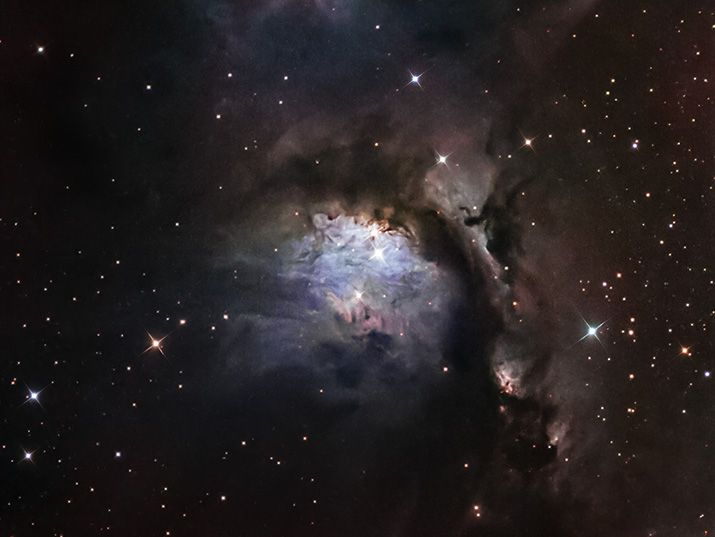
|
Date: Dec. 10, 2023 - Location: Davis Mountains West of Fort Davis, TX Telescope: 10 inch RC - Mount: Paramount-MX - Camera: Apogee U8300M Exposure: LRGB = 18x5 min. each - (Bin 2x2) Click on the image below to view at higher resolution. |

|
M78 (Messier 78, NGC 2068) is a reflection nebula discovered by Pierre Mechain in early 1780[1]. Charles Messier added it to his catalog on December 17, 1780[1]. This impressive celestial object resides in the Orion molecular cloud complex[1,2], a large cloud of gas and dust surrounding the Orion Nebula. M78, like all reflection nebulae, shines with the reflected and scattered light of bright stars. This gives the nebula its characteristic blue color and is essentially the same phenomenon that produces the blue color of our sky. The illuminating stars are bright B-type stars[1]. The two brightest of these stars are cataloged as HD 38563A and HD 38563B[1] and are evident in the image above. The distance measurements to M78 vary from approximately 1,350[1] and 1,600[2] light years. Additional spectrographic studies could possibly narrow this discrepancy. The diameter of the nebula, depending on the distance measurements, is between 3[1] and 4[2] light years. Several Herbig-Haro (HH) objects have been observed in M78[3]. These objects are associated with active new star forming regions[3]. This indicates strong activity of young stellar objects within M78[3].
Member of the Dark Sky Observatory Collaborative
References
|